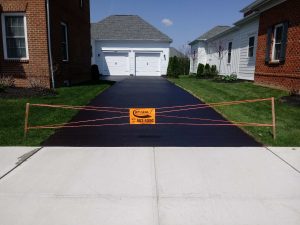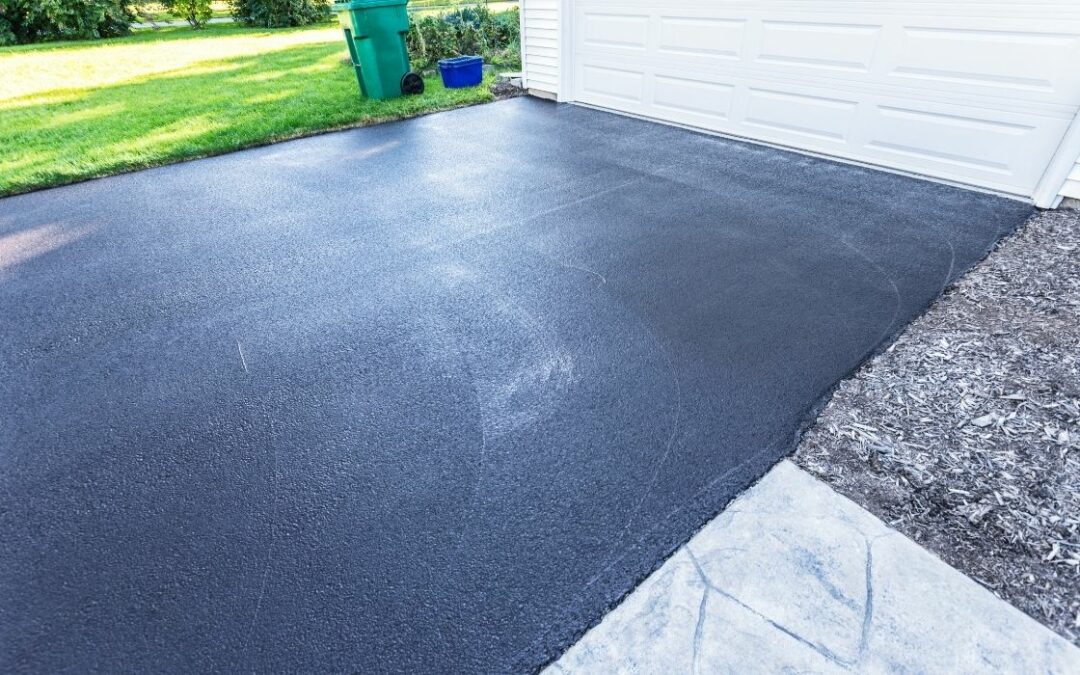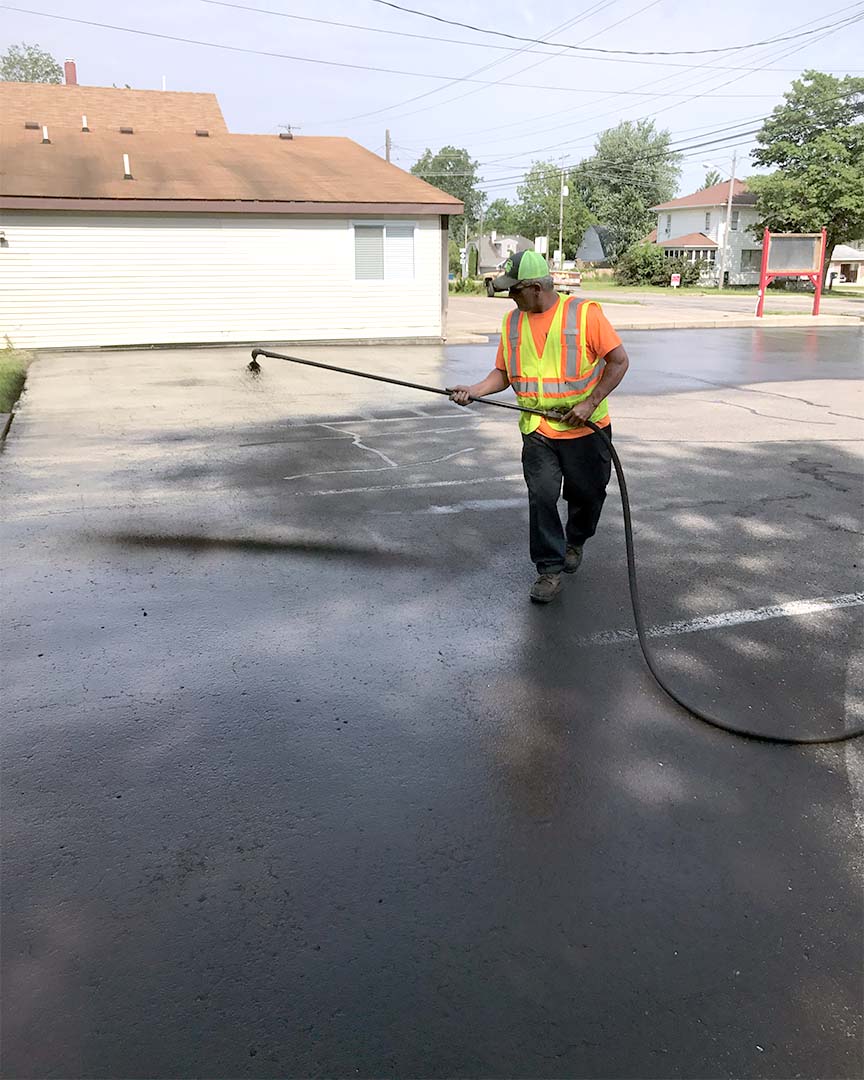Elevate Security and Allure: Angled Car Park Solutions with Asphalt Sealing
Elevate Security and Allure: Angled Car Park Solutions with Asphalt Sealing
Blog Article
Hot Mix Asphalt: A Sustainable Service for Pavement
Hot Mix Asphalt (HMA) has arised as a leading sustainable choice for sidewalk remedies, supplying a myriad of environmental advantages and innovative modern technologies. As the need for environment-friendly building and construction techniques expands, checking out the nuances of HMA's sustainability can supply valuable understandings into the future of sidewalk options.
Environmental Advantages of Warm Mix Asphalt

In Addition, Warm Mix Asphalt helps to minimize metropolitan warmth island impacts. Its dark shade absorbs sunshine, decreasing the quantity of heat showed back right into the atmosphere contrasted to lighter-colored sidewalks. This can reduce ambient temperature levels in urban areas, lowering the demand for a/c and inevitably decreasing power intake.
Additionally, Warm Mix Asphalt adds to enhanced stormwater administration. Its permeable nature permits water to recharge and infiltrate the pavement groundwater supplies, reducing runoff and the risk of flooding. These environmental benefits make Hot Mix Asphalt a lasting option for leading freeways and roadways.
Energy Effectiveness in HMA Manufacturing
Is energy performance a critical variable in the manufacturing of Hot Mix Asphalt (HMA)? Power plays a substantial function in the production of HMA, influencing both expense and environmental sustainability. One vital element of energy performance in HMA production is the use of cozy mix asphalt (WMA) innovations.
Furthermore, innovations in plant innovations have caused more energy-efficient HMA manufacturing processes. Modern plants are made with functions like recycled asphalt pavement (RAP) handling capabilities, effective burner systems, and enhanced insulation, all adding to energy financial savings. By enhancing power usage in HMA manufacturing, the industry can lower its carbon footprint while keeping premium pavement materials. Power efficiency is, consequently, a vital consideration in making sure the sustainability of Hot Mix Asphalt production.
Recyclability of Warm Mix Asphalt
The recyclability of Hot Mix Asphalt (HMA) is a critical facet of its sustainability and long-term environmental influence. HMA is one of one of the most recycled materials in the United States, with over 100 million lots of recovered asphalt sidewalk (RAP) being reused yearly in brand-new sidewalk building. Recycling HMA supplies a number of ecological advantages, such as reducing the need for virgin materials, reducing energy usage throughout manufacturing, and lowering the quantity of waste sent out to landfills.
The process of recycling HMA involves milling the existing pavement, crushing it into smaller pieces, and mixing it with new aggregate and asphalt binder to produce a recycled mix. This recycled mix can usually perform as well as or perhaps better than conventional HMA, while requiring fewer resources and producing lower greenhouse gas emissions. By incorporating RAP right into brand-new sidewalk tasks, road companies can conserve natural deposits, reduce prices, and decrease the ecological impact of road construction and maintenance tasks. On the whole, the recyclability of HMA plays a substantial function in promoting sustainable techniques within the sidewalk market.

Long-Term Performance of HMA
Asphalt sidewalks show durability and resilience over a prolonged duration, mirroring the long-term efficiency of Warm Mix Asphalt (HMA) The long life of HMA can be connected to its capacity to hold up against hefty traffic loads, harsh weather problems, and the results of aging. Researches have actually revealed that properly designed and appropriately built HMA pavements can last for twenty years or more with regular maintenance. The key to taking full advantage of the long-lasting performance of HMA exists in making use of high-grade products, complying with finest practices in construction, and implementing effective upkeep approaches. Appropriate drain, routine inspections, and prompt repair services are necessary for maintaining the structural stability of HMA pavements over time. In addition, improvements in HMA modern technology, such as making use of polymer-modified binders and cozy mix asphalt, have actually even more boosted the longevity and durability of HMA pavements. By focusing on quality building and construction and upkeep practices, HMA remains to show itself as a lasting and affordable solution for resilient pavement facilities.

HMA: Longevity and Sustainability
Demonstrating both longevity and sustainability, Hot Mix Asphalt (HMA) has come to be a cornerstone in the building and construction of resilient pavement facilities - hot mix asphalt. HMA's longevity comes from its capacity to endure hefty tons, harsh weather condition problems, and high web traffic volumes, making it a reliable option for roadways, highways, and airport terminal runways. The structure of HMA, which typically includes accumulations, binder, and filler, plays an important duty in enhancing its durability and resistance to tear and wear
Additionally, HMA's sustainability depends on its recyclability and energy-efficient production procedure. The capacity to recycle reclaimed asphalt pavement (RAP) in brand-new HMA combinations decreases the need for virgin products and minimizes the environmental impact of pavement building and upkeep. In addition, the power efficiency of producing HMA lies in its reduced blending temperature levels compared to other pavement materials, her response resulting in minimized power intake and greenhouse gas emissions.
Conclusion
In verdict, hot mix asphalt (HMA) provides a lasting remedy for pavement with its eco friendly qualities. HMA's recyclability, energy performance in manufacturing, and long-term resilience make it an environmentally friendly choice for roadway building.
HMA is one of the most recycled materials in the United States, with over 100 million bunches of redeemed asphalt pavement (RAP) being recycled every year in new sidewalk construction.The procedure of recycling HMA entails grating the existing pavement, squashing it into smaller sized pieces, and blending it visit this website with new accumulation and asphalt binder to create a recycled mix.Asphalt sidewalks demonstrate longevity and durability over an extensive period, mirroring check this site out the long-lasting efficiency of Hot Mix Asphalt (HMA) In addition, developments in HMA modern technology, such as the use of polymer-modified binders and cozy mix asphalt, have additionally improved the toughness and longevity of HMA pavements. The capacity to reuse recovered asphalt sidewalk (RAP) in new HMA combinations reduces the need for virgin products and reduces the ecological influence of pavement building and upkeep.
Report this page